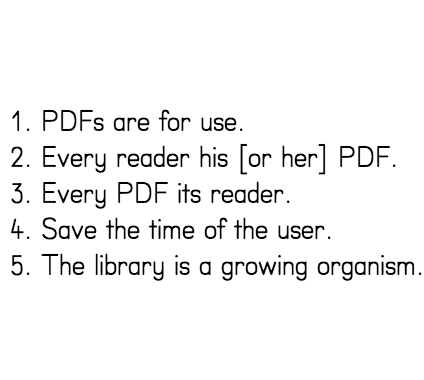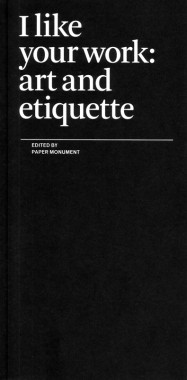The Serving Library
The first libraries were built on an Archiving model. In the Archiving Library, information and artifacts were collected, concentrated and protected in one central place. On July 1, 1731, Benjamin Franklin established the first Circulating Library in Philadelphia. Books were quite expensive, so by pooling resources many volumes could be shared among contributing members, and, the books moved around. Now, we propose a new model that joins the Archiving Library to the Circulating Library — The Serving Library.
The Serving Library is an archive assembled by publishing. Publishing and archiving have always been either end of a continuous loop, but now on an electronic network like the Internet, the two activities are both simultaneous and indistinguishable. This makes particularly small public libraries increasingly redundant. It’s time to reconsider what kind of library makes sense right now, and suggest one possible way forward.
The Serving Library follows directly from ten years of independently publishing Dot Dot Dot (www.dot-dot-dot.us), a biannual arts journal printed in a run of 3000 copies, with broad international distribution co-founded by Stuart Bailey in 2000. Dot Dot Dot then led to establishing Dexter Sinister (www.dextersinister.org) in 2006, a self-described “Just-in-Time Workshop and Occasional Bookstore” run from a modest basement on the Lower East Side of New York City. Evolving from a publication to a bookstore, we now want to expand from these relatively private activities to a more properly public sphere by developing a new library where materials are collectively produced, assembled and pooled to maintain a body of shared information that serves the committed community who helped make it.
We will build our library by publishing. Bulletins of the Serving Library will be a hybrid electronic / printed publication offered first as PDF files freely available, released in serial form on www.servinglibrary.org. Twice a year, these concise booklets will be collected, printed, bound and distributed. We’re ready to publish the first collection of Bulletins now. This first set directly addresses libraries, archives and collections and includes “An Octopus in Plan View” by Angie Keefer, an 8-part text on communication organized around the anatomy of an octopus; “From O-1: Information on Libraries & From 1-0: Information on Recording” by Rob Giampietro & David Reinfurt, on the paradox of contemporary archiving in the face of the Internet; and “The Life and Death of Media” by Bruce Sterling, an out-of-time plea for compiling an exhaustive list of outdated media formats.
We are asking for your support to help us develop the website, publish the PDFs, print, bind and distribute the first hard-copy issue of the Bulletins and to begin assembling The Serving Library.
I like your work: art and etiquette
Paper Monument, I like your work: art and etiquette
Softcover, 56 pp., offset 1/1, 4.25 x 8.5 inches
Second edition
ISBN 978-0-9797575-2-5
Published by Paper Monument
$8.00 · out of stock
The art world is now both socially professional and professionally social. Curators visit artists’ studios; collectors, dealers, and journalists assemble for a reception and reconvene later for dinner; everyone goes to parties. We exchange introductions and small talk; art is bought and sold; careers (and friendships) brighten or fade. In each situation, certain behaviors are expected while others are silently discouraged. Sometimes, what’s appropriate in the real world would be catastrophic in the art world, and vice versa.
Making these distinctions on the spot can be nerve-wracking and disastrous. So we asked ourselves: What is the place of etiquette in art? How do social mores establish our communities, mediate our critical discussions, and frame our experience of art? If we were to transcribe these unspoken laws, what would they look like? What happens when the rules are broken? Since we didn’t have all the answers, we politely asked our friends for some help.
I like your work: art and etiquette
Paper Monument, I like your work: art and etiquette
Softcover, 56 pp., offset 1/1, 4.25 x 8.5 inches
Edition of 500
ISBN 978-0-9797575-2-5
Published by Paper Monument
out of print · order second edition
The art world is now both socially professional and professionally social. Curators visit artists’ studios; collectors, dealers, and journalists assemble for a reception and reconvene later for dinner; everyone goes to parties. We exchange introductions and small talk; art is bought and sold; careers (and friendships) brighten or fade. In each situation, certain behaviors are expected while others are silently discouraged. Sometimes, what’s appropriate in the real world would be catastrophic in the art world, and vice versa.
Making these distinctions on the spot can be nerve-wracking and disastrous. So we asked ourselves: What is the place of etiquette in art? How do social mores establish our communities, mediate our critical discussions, and frame our experience of art? If we were to transcribe these unspoken laws, what would they look like? What happens when the rules are broken? Since we didn’t have all the answers, we politely asked our friends for some help.

